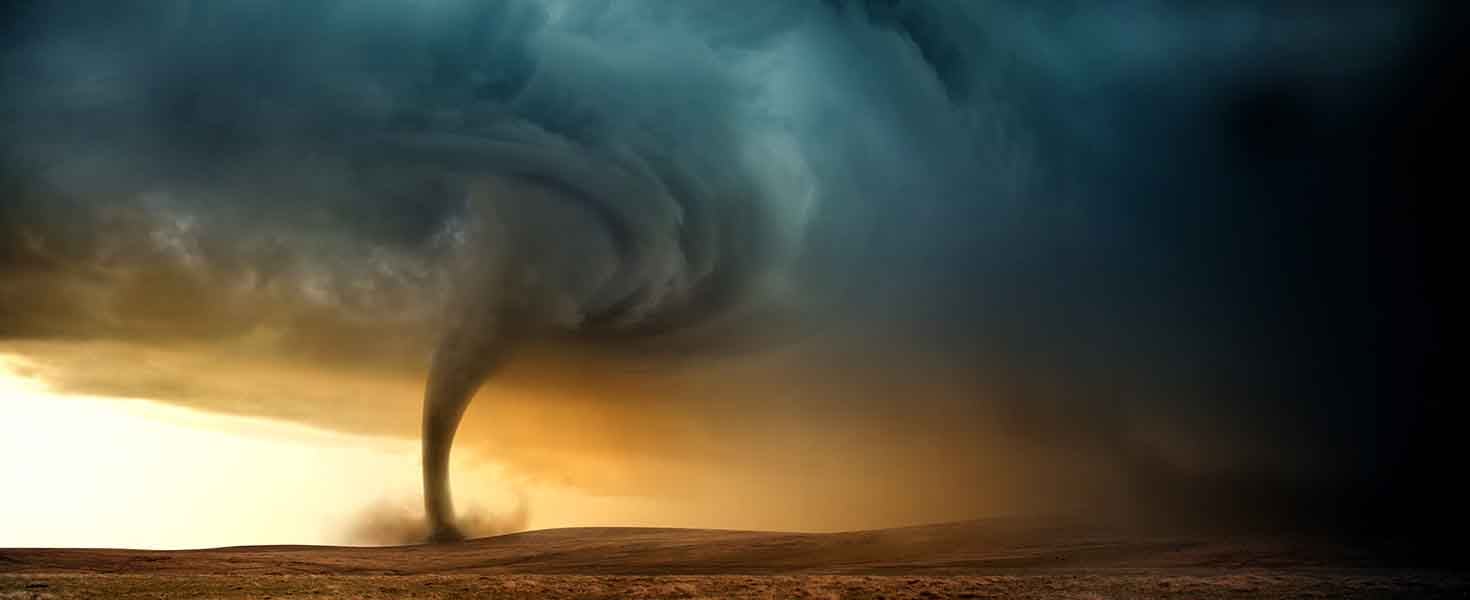

While tornadoes are more common in the Midwest and southeast U.S., they can strike anywhere and destroy everything in their path. Tornados can’t be prevented, they can be prepared for. Here are a few ways to prepare for a tornado, and tips for keeping yourself and family safe before, during and after one.
First, know the difference between a tornado watch and a tornado warning.
Watch
A watch means a tornado is possible. Keep an eye on the weather and be prepared to take cover.
Warning
A warning means a tornado is already occurring or will occur very soon, and you should seek shelter immediately. If you hear your community’s tornado sirens, that likely means there is a tornado warning.
Before a tornado even occurs, talk to your family about tornados so everyone knows where to go and what to do. Assemble an emergency preparedness kit, and create a household evacuation plan that includes your pets. Make sure you have access to tornado warning systems and alerts.

Before
If a tornado watch or warning has been issued for your area, don’t wait until you see a tornado to take action.
- Listen to local TV and radio for updates and information.
- Find a local emergency shelter and the best way to get there if you are forced to evacuate your home or do not have a sturdy shelter, such as if you live in a mobile home.
- Move to an underground shelter, basement or safe room. If none is available, the safest alternative is the lowest level of a sturdy building, or a small, windowless interior room or hallway. If you have pets, take them with you.

During
If there is a tornado, seek shelter immediately.
- If you can’t walk to a shelter, drive. The quicker you can get to a safe shelter, the better.
- Stay away from highway bridges and overpasses.
- If strong winds occur during your drive, stop the car but keep the engine running. Pull off to the side of the road as far away from traffic as possible, or into a parking lot. Turn on your vehicle’s flashers to signal to other drivers you are stopped.
- Put your head down below the car windows, covering your head with your hands and a blanket. This will protect you from flying glass and other debris.
After
When the tornado watch or warning has been lifted, continue listening to local news or a NOAA Weather Radio for updated information and instructions. You should also:
- Check for injuries. If you’re trained, provide first aid until emergency responders arrive.
- Let your friends and family know you’re safe. You can even register yourself as safe on the Safe and Well website.
- If evacuated, return only when authorities say it’s safe. Stay out of damaged buildings, and watch out for fallen power lines or broken gas lines.
If your home was damaged by a tornado, take photos of the damage - both the building and its contents - for insurance purposes. Ask a professional to check your home’s frame, walls, structure and chimney for damages and to help safely repair them.
